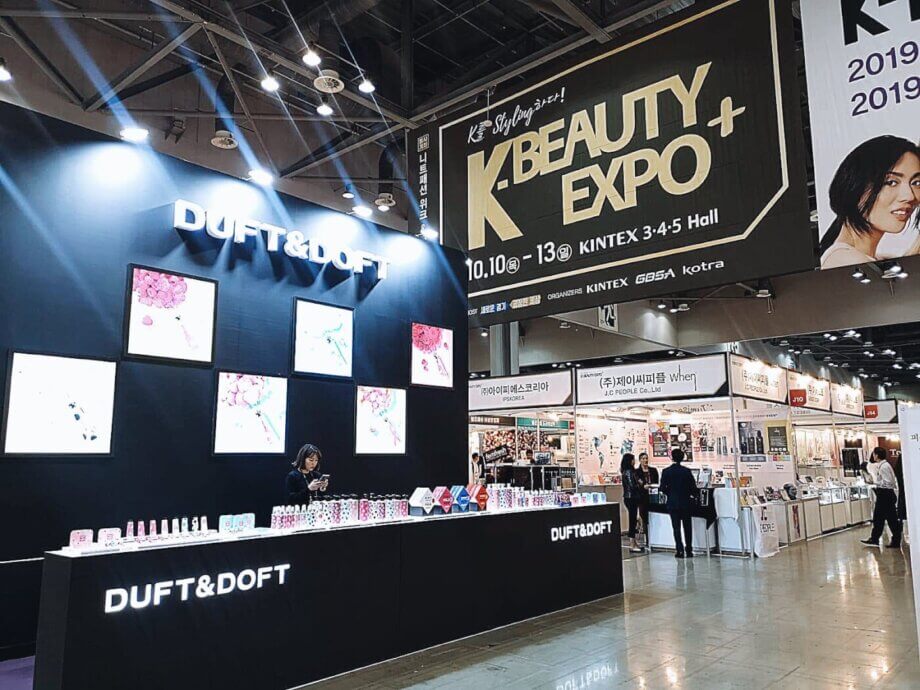South Korea Overtakes the US in Cosmetics Exports: A New Era for K-Beauty
South Korea has achieved a historic milestone in the global beauty industry, surpassing the United States to become the world’s second-largest cosmetics exporter, trailing only France. This remarkable ascent, driven by the global popularity of K-beauty products and the broader “Hallyu” (Korean Wave) phenomenon, marks a significant shift in the international cosmetics landscape. According to data from the Korea International Trade Association (KITA) and the Ministry of Food and Drug Safety, South Korea’s cosmetics exports reached $3.61 billion from January to April 2025, narrowly edging out the United States’ $3.57 billion in the same period. This is the first time South Korea has overtaken the US in beauty exports, a feat that underscores the country’s growing influence in the sector.
- South Korea Overtakes the US in Cosmetics Exports: A New Era for K-Beauty
- How Did South Korea Achieve This Milestone?
- What’s Driving the K-Beauty Boom?
- Strategic Expansion into New Markets
- The Impact on the Global Beauty Industry
- Challenges and Opportunities Ahead
- Industry Reaction and Market Impact
- The Broader Context: K-Beauty and the Hallyu Wave
- In Summary
The rapid growth of South Korea’s cosmetics industry is not just a story of numbers, but also of innovation, cultural influence, and strategic market expansion. The K-beauty phenomenon, once a niche trend, has now become a global force, reshaping consumer preferences and challenging long-established industry giants.
How Did South Korea Achieve This Milestone?
South Korea’s rise in the cosmetics export rankings has been nothing short of meteoric. In 2024, the country’s cosmetics exports totaled $10.3 billion, outpacing Germany’s $9.08 billion to become the world’s third-largest exporter, behind France and the US. While France and the US recorded modest growth rates of 6.3% and 1.1% respectively, South Korea’s exports surged by an impressive 20.3% year-on-year. This momentum has continued into 2025, with monthly exports climbing steadily from $750.8 million in January to $1.03 billion in April.
By product category, basic skincare products led the charge, accounting for $7.67 billion of total exports, followed by makeup at $1.35 billion and cleansing products at $470 million. Notably, cleansing products saw the strongest growth, with a 30.7% year-on-year increase. This reflects global consumer trends favoring multi-step skincare routines and innovative cleansing solutions, both hallmarks of K-beauty.
South Korea’s export growth is not limited to traditional markets. While China remains the largest importer of Korean cosmetics (accounting for 24.5% of exports, or around $2.5 billion), the US and Japan have become increasingly important. The US imported $1.9 billion worth of Korean cosmetics in 2024, a 57% increase from the previous year, while Japan’s imports rose by 29.2% to cross the $1 billion mark for the first time. Other key markets include Hong Kong, Vietnam, Russia, and Taiwan, with the United Arab Emirates breaking into the top 10 importers in 2024.
What’s Driving the K-Beauty Boom?
The global success of K-beauty is rooted in several interrelated factors:
- Innovation and Product Development: Korean beauty brands are renowned for their rapid product development cycles, innovative formulations, and use of unique natural ingredients such as ginseng, rice water, and snail mucin. This constant innovation keeps consumers engaged and eager to try new products.
- Cultural Influence: The “Hallyu” wave—encompassing K-pop, K-dramas, and Korean fashion—has significantly boosted the visibility and desirability of Korean beauty products. Fans of Korean entertainment often aspire to emulate the flawless skin and trendy looks of their favorite stars, driving demand for K-beauty products worldwide.
- Affordability and Accessibility: Compared to luxury European brands, Korean cosmetics are often more affordable without compromising on quality. This price advantage, combined with effective marketing and distribution strategies, has made K-beauty accessible to a broad global audience.
- Inclusivity and Diversity: Korean brands have responded to global calls for inclusivity by offering a wide range of shades and products suitable for diverse skin tones. For example, the brand TirTir went viral on TikTok for its cushion foundations available in 40 shades, catering to a wider demographic than many traditional brands.
- Social Media and Digital Marketing: The rise of social media platforms like Instagram, YouTube, and TikTok has played a pivotal role in popularizing K-beauty. Influencers and beauty enthusiasts share tutorials, reviews, and product recommendations, creating viral trends and driving global demand.
Strategic Expansion into New Markets
While China, the US, and Japan remain the largest markets for Korean cosmetics, South Korean brands are increasingly targeting emerging markets in Europe and the Middle East. Exports to Poland from January to May 2025 surged 121% to $111.8 million, up from $50.4 million a year earlier. Similarly, exports to the United Arab Emirates rose 74% to $99.3 million over the same period. These figures highlight the adaptability and global ambition of Korean beauty brands.
Industry experts attribute this success to a combination of product innovation, cultural resonance, and strategic partnerships. Korean companies often collaborate with local distributors and retailers to tailor their offerings to specific market preferences. In the US, for example, Korean brands have focused on functional skincare products like anti-aging serums and sunscreens, while in Japan, vibrant makeup inspired by K-pop trends appeals to younger consumers.
The Impact on the Global Beauty Industry
South Korea’s ascent in the cosmetics export rankings has had ripple effects throughout the global beauty industry. In the US, Korean beauty products have become the top imported cosmetics, surpassing even France’s high-end giants. According to the US International Trade Commission, Korean cosmetics exports to the US totaled $1.7 billion in 2024, compared to France’s $1.26 billion. This shift reflects changing consumer preferences, with American shoppers increasingly seeking innovative, effective, and affordable skincare solutions.
The influence of K-beauty extends beyond product sales. Korean brands are setting new standards for product development, marketing, and consumer engagement. Their willingness to experiment with new ingredients, textures, and packaging has inspired competitors worldwide to innovate and adapt. The “fast beauty” model—characterized by rapid product launches and trend-driven offerings—has become a hallmark of the industry, with contract manufacturers like Cosmax and Kolmar Korea playing a key role in keeping costs low and production agile.
Challenges and Opportunities Ahead
Despite its impressive growth, the Korean cosmetics industry faces several challenges. The Chinese market, once the primary driver of export growth, has seen its share decline from 32.8% in 2023 to 24.5% in 2024. This is due in part to increased competition from local Chinese brands and shifting consumer preferences. To mitigate this, Korean companies are diversifying their export destinations and investing in regulatory compliance to meet the safety standards of different countries.
Another challenge is the need to maintain product quality and innovation in the face of rapid expansion. As more brands enter the market and competition intensifies, sustaining consumer trust and brand loyalty becomes increasingly important. The Korean government has pledged to support the industry through regulatory diplomacy and initiatives to enhance product quality and international competitiveness.
Oh Yu-Kyoung, Minister of the Ministry of Food and Drug Safety, emphasized the government’s commitment:
“The ministry will strengthen cooperation between countries through regulatory diplomacy to ensure continued export growth. We will also support our companies in enhancing their competitiveness in product quality internationally.”
Industry Reaction and Market Impact
The news of South Korea surpassing the US in cosmetics exports has had a tangible impact on the domestic market. On June 30, 2025, shares of major Korean cosmetics companies surged, with Kolmar Korea, Amorepacific, APR, Cosmax, and others hitting new 52-week highs. Beauty device stocks also saw significant gains, reflecting investor confidence in the sector’s growth prospects.
Industry analysts point to the continued popularity of Korean cosmetics in the US and Europe as a key driver of future growth. With plans for new manufacturing facilities and retail expansions in the US, Korean brands are positioning themselves to capitalize on rising demand. Global players like L’Oréal are reportedly eyeing Korean firms for acquisition, further validating the industry’s global appeal.
The Broader Context: K-Beauty and the Hallyu Wave
The success of Korean cosmetics cannot be separated from the broader cultural phenomenon of the Hallyu wave. The global popularity of K-pop, K-dramas, and Korean fashion has created a powerful platform for promoting beauty products. Celebrity endorsements, drama tie-ins, and viral social media campaigns have all contributed to the rise of K-beauty as a global trendsetter.
In the US, the arrival of K-beauty began in earnest around 2011 with the introduction of BB creams and other innovative products. Since then, the market has evolved rapidly, with Korean brands now offering a wide range of skincare and makeup products tailored to diverse consumer needs. The emphasis on natural ingredients, gentle formulations, and multi-step routines has resonated with consumers seeking effective and enjoyable beauty experiences.
In Summary
- South Korea has surpassed the United States to become the world’s second-largest cosmetics exporter, trailing only France.
- Korean cosmetics exports reached $10.3 billion in 2024, with strong growth continuing into 2025.
- The success of K-beauty is driven by innovation, cultural influence, affordability, inclusivity, and effective digital marketing.
- Key markets include China, the US, Japan, and emerging destinations in Europe and the Middle East.
- Korean beauty products have become the top imported cosmetics in the US, surpassing France.
- The industry faces challenges such as shifting market dynamics in China and the need to maintain quality amid rapid growth.
- The Korean government is supporting the industry through regulatory diplomacy and initiatives to enhance global competitiveness.
- The rise of K-beauty reflects broader trends in global consumer preferences and the growing influence of Korean culture worldwide.












